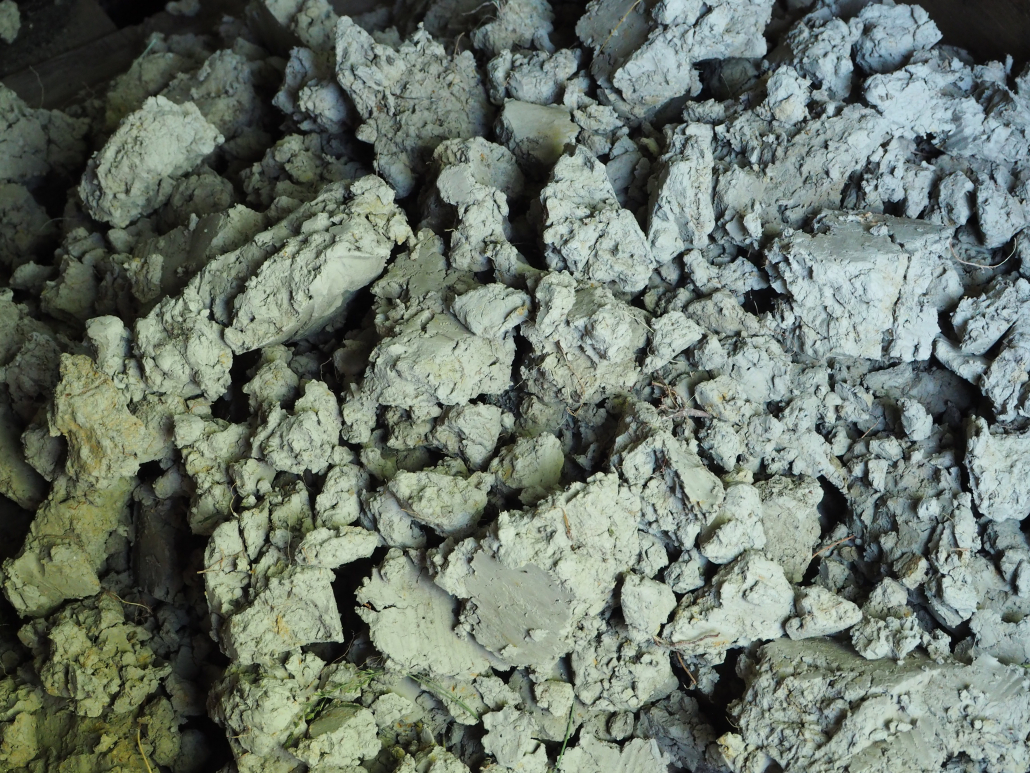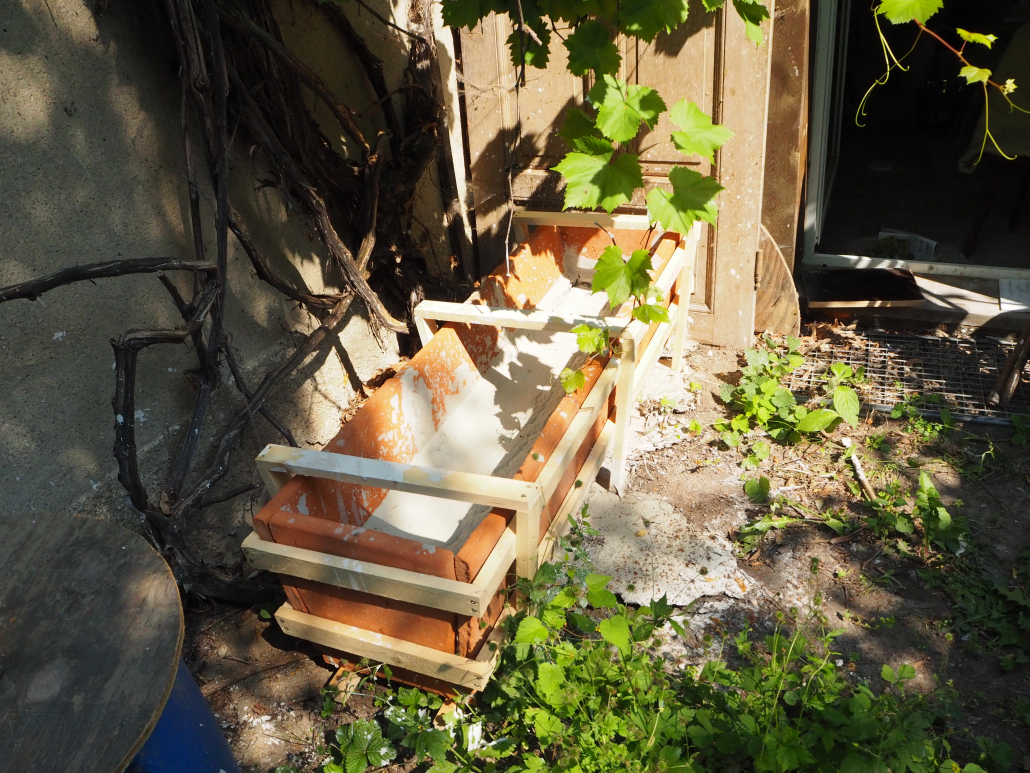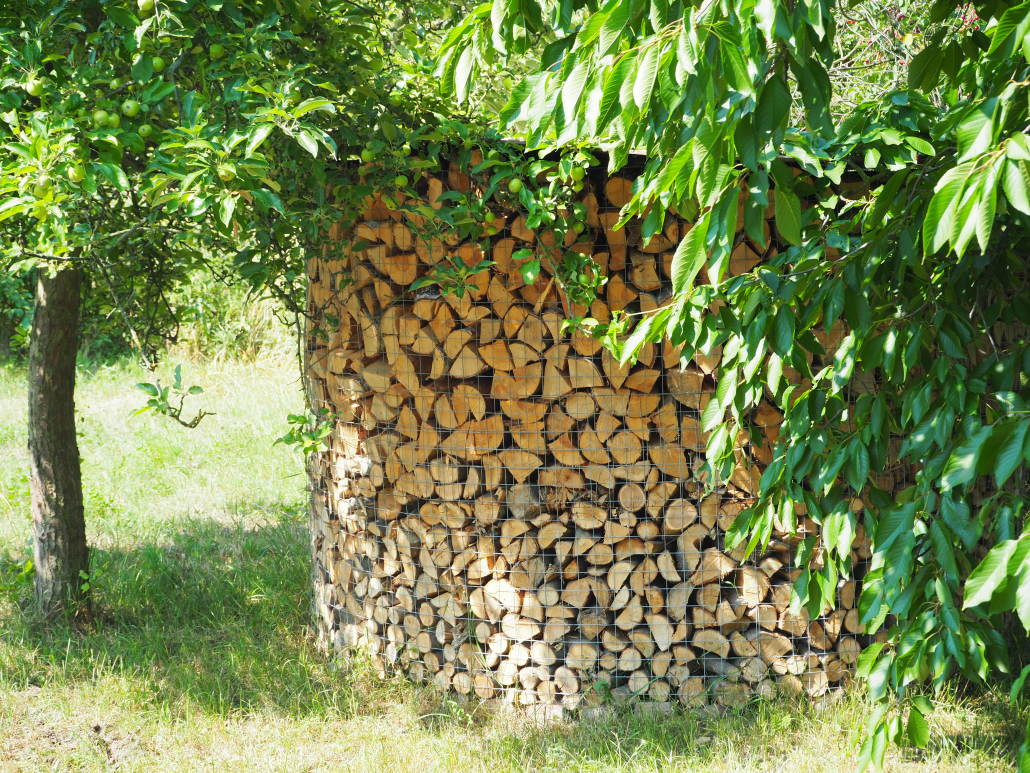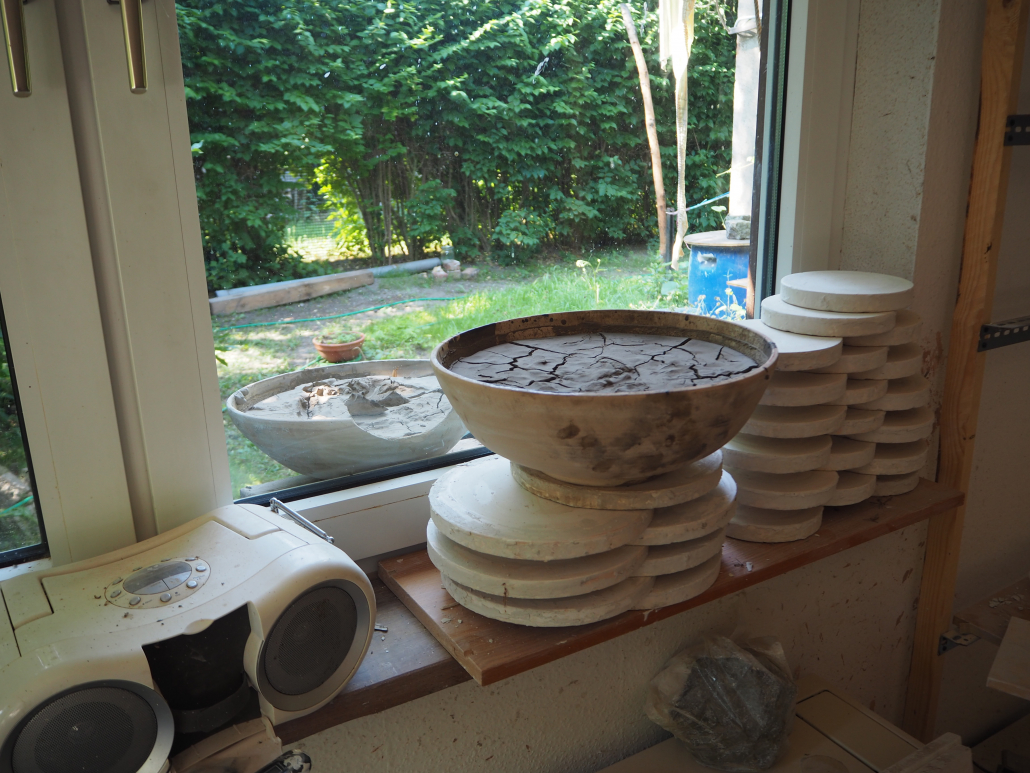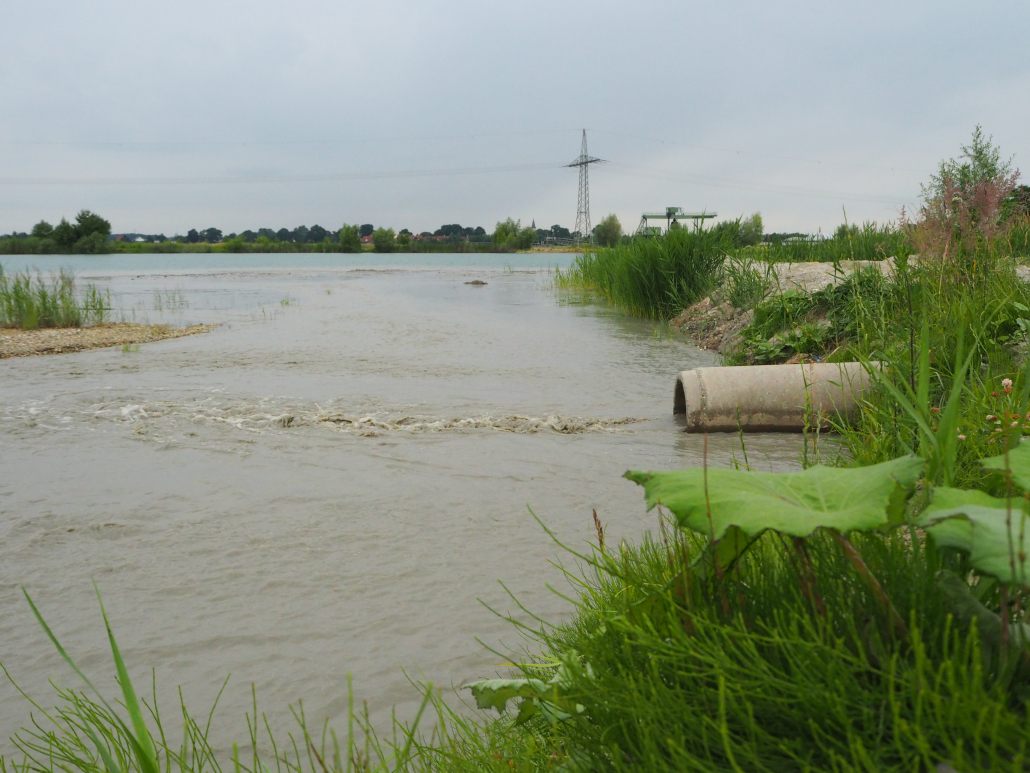In order to create pots, that exhibit life and personality, the resources used have to be natural, alive and changing as well. Unfortunately (or fortunately?) materials like this do not come to your mail box neatly packed in plastic bags. So I regularly have to go roaming with my folding spade to uncover new local sources for ashes, clay bodies and slips. Those trips are an totally unexpected site effect of my choice to become a potter and yet, have become one of my favorite potting labors.
- Frohnsdorfer clay
- Is one of the most used regional stoneware clay. I buy it from a small supplier and it is quite plastic, pure and very forgiving when mixed with other materials.
- local clays
- The local clays were primarily used to make high fired yellow bricks and do not quite withstand stone ware temperatures. Yet mixed with the Frohnsdorfer clay they can create very interesting dark and gritty stone ware bodies. I get them from my garden and from an abandoned clay pit nearby.
- Eisenberger clay
- Is an other traditionally used regional clay. It is red, low firing and extremely plastic. I use it mostly for my temmoku glaze.
Wood ash is probably the oldest glaze material for high fired wares. Every ash behaves different in a glaze, depending of type of plant, quality and composition of the soil, there are even differences between trunk and branch wood ash.
Preparing the ash for mixing with other glaze materials is an time consuming and labor intensive process. Every batch has to be washed several time with rain water, then sieved through a very fine sieve and finally dried in large bowls.
This unpredictability and non repeatability make plant ashes an ideal component for truly individual glazes. They are used in almost all of my glazes and offer me an endless challenge to create a new glaze when a batch of ash runs out. My currently used ashes are as follows
- a mixed wood ash comprised of most soft wood like birch and pine
- This is my base ash, I collect it from friends who heat their house with wood stoves
- oak wood ash
- With the bulk of my oak wood still drying, I do not have a lot of this particular ash and I use it sparingly as an addition to my blue celadon glaze
- easter bonfire ash
- An ash comprised mostly of branch wood from walnut and fruit trees. It fluxes the glazes heavily and is used in many of my glazes.
- willow leaf ash
- Every year I collect a large amount of willow leafs from the large tree that protects our house. It fires to a very nice velvety green.
- reed ash
- My newest ash. Currently in preparation.
The sand I add to my clay bodies and use in a few glazes comes as a waste product from a local gravel pit. It is very fine and even collects a thin layer of non plastic clay on top which i use for slips.

